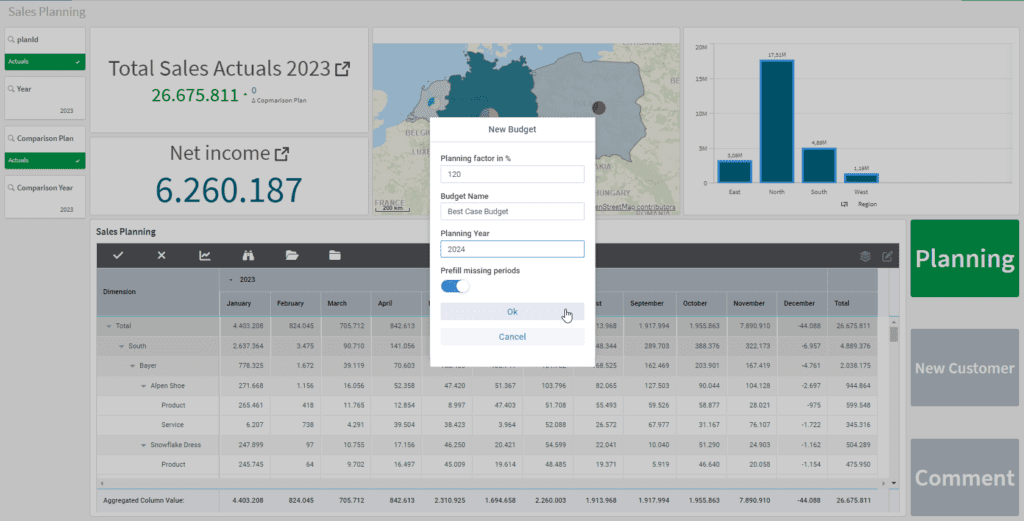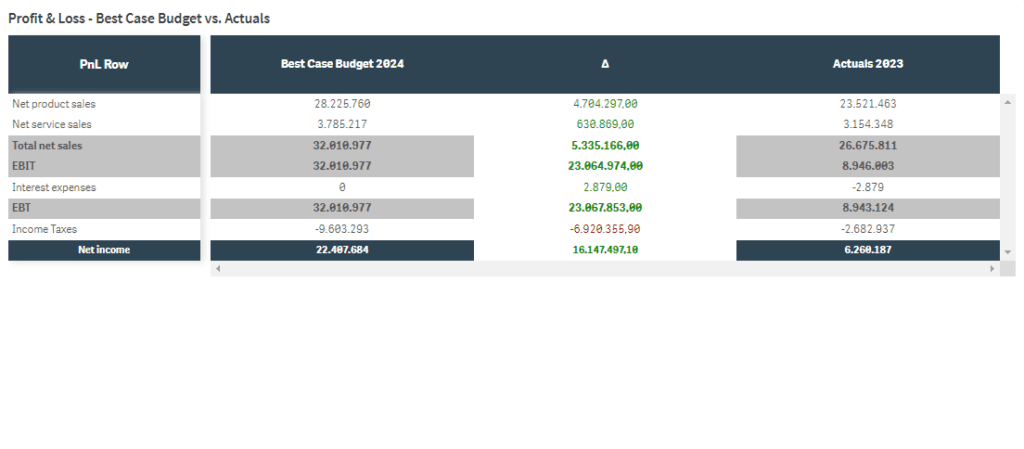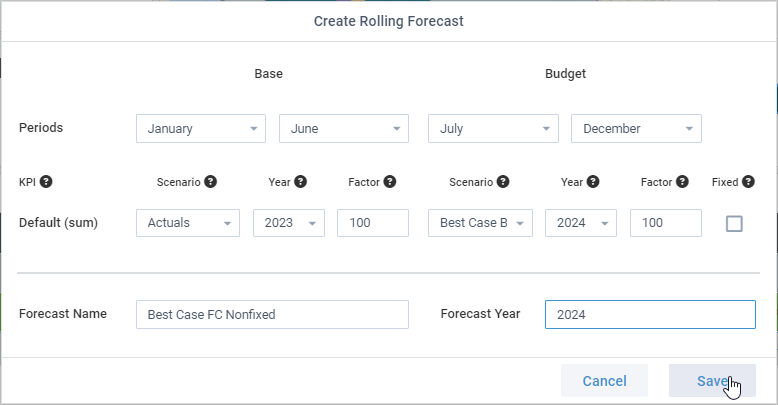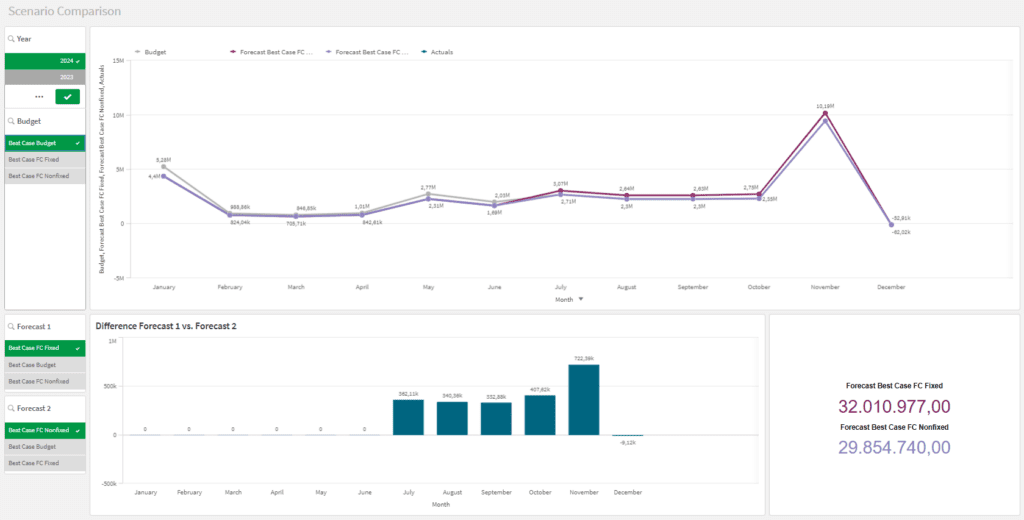insightsoftware, a global provider of comprehensive solutions for finance, accounting, and operations teams, today announced that it plans to acquire Fiplana,
Budgets vs. forecasts - Why budgets are important, but forecasts are even more important
Budgets are typically prepared annually and provide financial targets and constraints for a specified period of time. In doing so, the budget provides a guideline for achieving a company's strategic goals. A sticking point in today's fast-paced environment is the budget's lack of flexibility. In order to be able to react more dynamically to rapid economic changes, technology development and unpredictable environmental influences, there is a need for forecasts.
The forecast process is performed on a regular basis and can be updated, for example, on a weekly, monthly or quarterly basis. A forecast uses the interaction of historical (actual) data and algorithmic methods to predict future events. It reacts very quickly to both external and internal changes and helps to identify trends so that timely action can be taken.
So while the budget is good for establishing an initial plan for the coming fiscal year with clearly defined goals, the forecast is used to monitor and respond to those goals at regular intervals and take countermeasures as needed to ensure alignment with goal achievement.
Proper use of forecasts actually provides your company with the ability to quickly adapt to changes, significantly impact financial health as well as competitive position. This allows your company to stay ahead of the competition by analyzing and responding to both your company data and market data based on current business conditions and market dynamics.
Fiplana: Our solution for your planning, budgeting and forecasting needs
Fiplana offers an innovative solution to these challenges. Our platform is designed to help companies like yours create and manage budgets and forecasts more effectively, and enables real-time adjustments in response to environmental changes.
We use advanced methods based on the analysis of historical data and the consideration of current market conditions to generate accurate forecasts. This dynamic approach enables companies to make strategic decisions based on current and reliable data.
Furthermore, Fiplana doesn't just stop at budgeting and forecasting. We understand the need for agility in today's volatile business landscape, which is why our solution enables real-time response to environmental changes. With our intuitive and modern analytics and notification system, you are instantly alerted to any significant changes that could impact your budget or forecast, allowing you to react quickly and effectively to ensure you achieve your goals.
Concrete example based on sales planning
With Fiplana you can implement many types of planning. From simpler turnover, cost unit, sales, marketing, personnel planning to more complex financial planning topics such as profit and loss planning or cash flow planning.
Planning is always based on historical data or a scenario. In our example, we create a sales plan. At the beginning of the fiscal year, we create a budget with the name "Best Case Budget" and a target to exceed our ACTUAL figures by 20%:

The new budget is then immediately available for further planning and analysis in Fiplana and is approximately 32,000,000€ as a target value:

The data just created can be immediately analyzed with each other, for example, to perform a scenario analysis or what-if planning, as shown here in the example of a P&L presentation based only on sales:

Now let's imagine that the fiscal year has progressed and we are in July. This means that we have already posted ACTUAL figures from January to June and based on that we want to see how the current fiscal year would go against the plan of the budget and if we have to react, if necessary, to reach our target of € 32,000,000 in sales.
For this purpose, we have implemented the logics of the non-fixed budget and the fixed budget in our forecast algorithm.
First, we create the plan "Best Case FC Nonfixed" with the data from January to June 2023 with the Actuals (ACTUAL figures) and for the rest of the year we take as a forecast basis the values from July to December from our budget "Best Case Budget" created at the beginning of the fiscal year:

We make the similar configuration for the "Best Case FC Fixed" plan, but we select the "Fixed" option for the fixed budget. By checking the box, we ask Fiplana to show us how we need to perform for the rest of the year in order to reach our annual targets:

This is then followed, as in our example, by a scenario analysis - shown here as a visual graphic:

At the bottom right, you can see two very important figures based on the "Fixed" and "Non Fixed" logics described above.
Non-fixed means: show me where we would stand at the end of the year if we continue to perform against our budget plan, even if we have not yet reached or even exceeded our targets to date. The result in that case would be that we would end up with a result of about €29,850,000 and therefore more than €2,000,000 below target. This is also indicated by the purple line in the upper diagram.
However, to see how we reach our target, we activate Fiplana's "Fixed" logic. Here Fiplana shows us exactly how we have to perform the next months based on the statistical distribution curves of our past in order to still reach our target of €32,000,000 - since we performed below plan in the months January to June.
In short, Fiplana offers you a detailed, comprehensive and absolutely flexible way to simulate different scenarios and situations and make your decisions based on them.
The dashboards for analysis and planning views are fully flexible and can be defined according to your requirements without any limitations.
Conclusion
In summary, the dynamic nature of the current business environment requires an equally dynamic approach to budgeting and forecasting. Traditional methods that rely on static, time-bound budgets and forecasts are no longer sufficient. Companies need a solution that not only facilitates accurate budgeting and forecasting, but also enables real-time adjustment in response to environmental changes.
Fiplana is designed to meet these challenges. By incorporating current market conditions and historical data into our forecasting model, we provide companies with reliable, up-to-date data for strategic decision-making. In addition, our real-time alert system allows you to react quickly to environmental changes that could impact your budget or forecasts. With Fiplana, you don't just react to the business environment; you stay one step ahead.
Take advantage of the future of budgeting and forecasting with Fiplana - because in business, it's not enough to just react. Be proactive!


